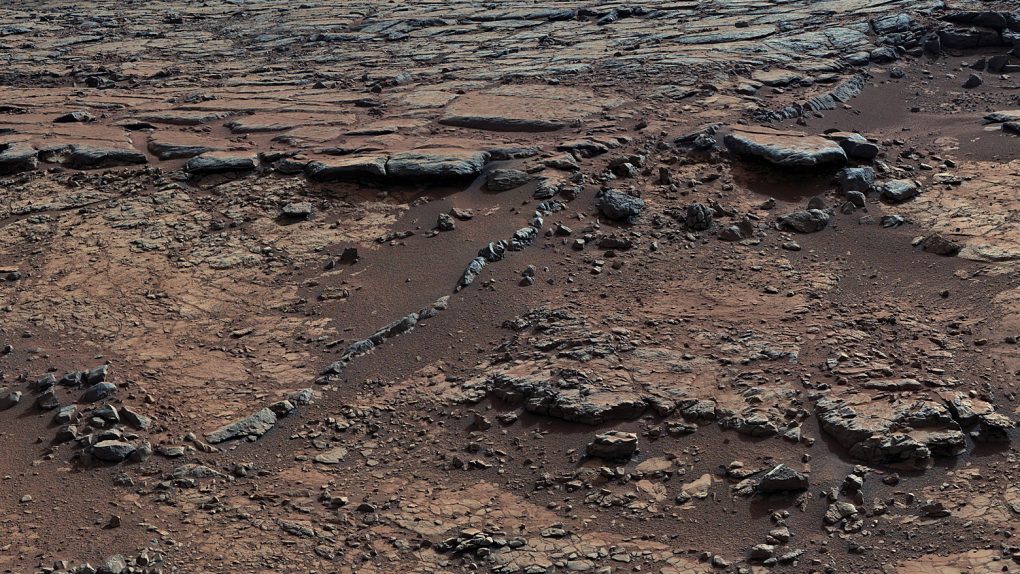There’s no shortage of theories about what Mars was like billions of years ago. The prevailing guess is that water was abundant, and there may have even been enough to form huge oceans. New research into an existing geographical feature on the red planet could provide new evidence of not only the existence of a massive body of water, but also an astroid impact that could have generated multiple devastating tsunamis.
Evidence that water existed on Mars is ample, and many researchers believe that telltale signs of tsunamis are also present. In an effort to explain how a tsunami might have been generated, scientists have been looking for the spot (or spots) on the Martian surface where an astroid or other celestial object could have come crashing down.
One particularly interesting spot on the planet, which NASA describes as “thumbprint-looking,” was long thought to be the result of mud or other debris sliding downward after being pushed up by a glacier or other geographical shift. It’s called the Lomonosov crater, and new research supports a very different theory as to how it got there.
Instead of being simply the result of gravity pulling dirt downhill, scientists now believe it could very well be the last remaining mark of an astroid that violently struck Mars billions of years ago. What’s more, the characteristics of the crater support the idea that when the rock struck the planet, the spot it hit was actually an ocean, leading to multiple huge tidal waves as the displaced water was pushed from and pulled into resulting crater.








